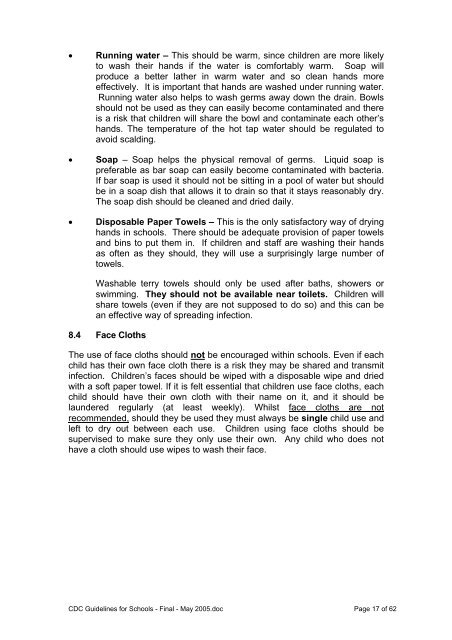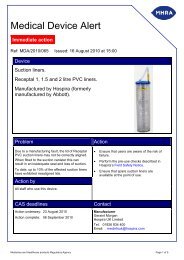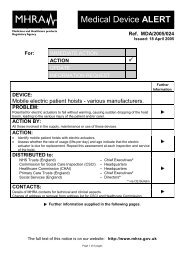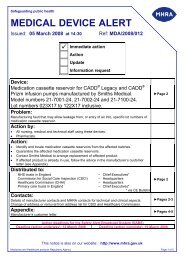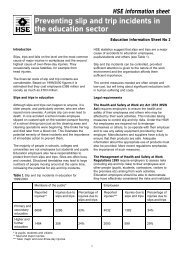Infection Control.pdf - Bolton LEA Website
Infection Control.pdf - Bolton LEA Website
Infection Control.pdf - Bolton LEA Website
You also want an ePaper? Increase the reach of your titles
YUMPU automatically turns print PDFs into web optimized ePapers that Google loves.
• Running water – This should be warm, since children are more likelyto wash their hands if the water is comfortably warm. Soap willproduce a better lather in warm water and so clean hands moreeffectively. It is important that hands are washed under running water.Running water also helps to wash germs away down the drain. Bowlsshould not be used as they can easily become contaminated and thereis a risk that children will share the bowl and contaminate each other’shands. The temperature of the hot tap water should be regulated toavoid scalding.• Soap – Soap helps the physical removal of germs. Liquid soap ispreferable as bar soap can easily become contaminated with bacteria.If bar soap is used it should not be sitting in a pool of water but shouldbe in a soap dish that allows it to drain so that it stays reasonably dry.The soap dish should be cleaned and dried daily.• Disposable Paper Towels – This is the only satisfactory way of dryinghands in schools. There should be adequate provision of paper towelsand bins to put them in. If children and staff are washing their handsas often as they should, they will use a surprisingly large number oftowels.Washable terry towels should only be used after baths, showers orswimming. They should not be available near toilets. Children willshare towels (even if they are not supposed to do so) and this can bean effective way of spreading infection.8.4 Face ClothsThe use of face cloths should not be encouraged within schools. Even if eachchild has their own face cloth there is a risk they may be shared and transmitinfection. Children’s faces should be wiped with a disposable wipe and driedwith a soft paper towel. If it is felt essential that children use face cloths, eachchild should have their own cloth with their name on it, and it should belaundered regularly (at least weekly). Whilst face cloths are notrecommended, should they be used they must always be single child use andleft to dry out between each use. Children using face cloths should besupervised to make sure they only use their own. Any child who does nothave a cloth should use wipes to wash their face.CDC Guidelines for Schools - Final - May 2005.doc Page 17 of 62


